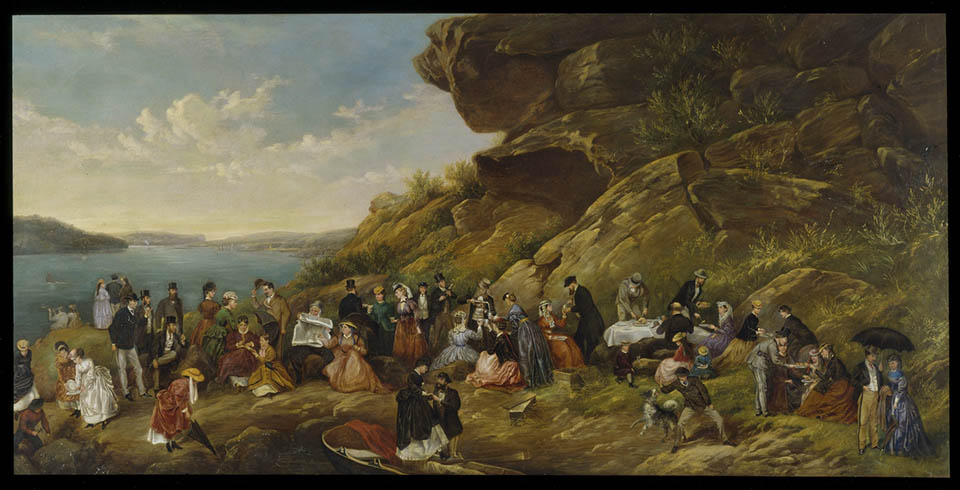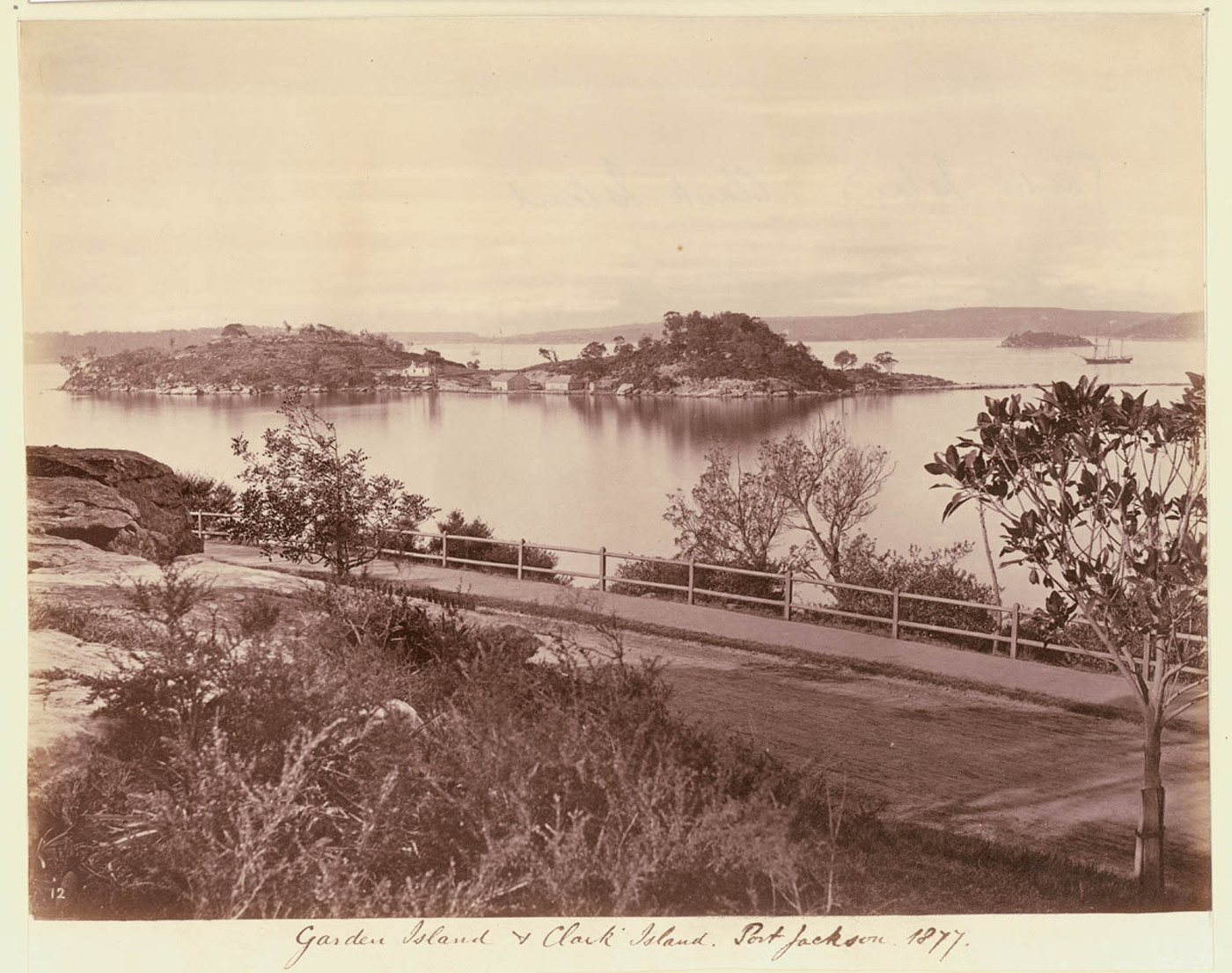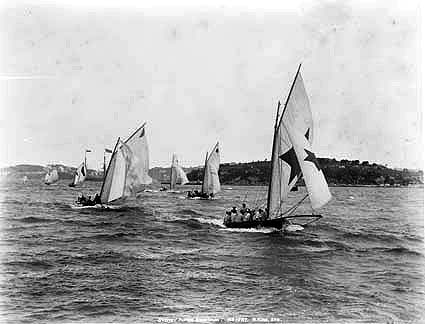The Dictionary of Sydney was archived in 2021.
Clark Island
Citation
Persistent URL for this entry
To cite this entry in text
To cite this entry in a Wikipedia footnote citation
To cite this entry as a Wikipedia External link
Clark Island
[media]This tiny yet beautiful and interesting island is smaller than one hectare in area and lies less than a kilometre from Bradley's Head and 350 metres north of Darling Point. The original inhabitants of Sydney called Clark Island 'Billong-olola'.
The British named the island after Lieutenant Ralph Clark, an officer of Marines who arrived with the First Fleet in 1788. In November 1789 he was given permission to plant a vegetable garden on the island, where he attempted to grow potatoes, onions and corn. There was a shortage of food in the fledgling colony at the time. He soon gave up his vegetable enterprise when it became clear that Aboriginal, convict and fellow marine poachers were helping themselves to his produce. [1]
In the second half of the nineteenth century the island became a popular picnic spot and it was immortalised in 1870 in Montagu Scott's oil painting, A Day's Picnic on Clark Island. [2] Scott's best-known picture was a celebration of the importance of the picnic in the recreational and social life of Sydney. A Day's Picnic was exhibited for sale for £200 at the Sydney Intercolonial Exhibition in 1870. [3] It was given to the Mitchell Library in 1930.
Pleasure garden
[media]In 1879, together with Rodd, Shark and Snapper islands, Clark Island was proclaimed a public reserve and the Clark Island Trust was set up in 1892 to improve the visiting experience of the island. Henry Copeland, the New South Wales Minister for Lands, was the first chairman of the Trust. Under his leadership, Clark Island was transformed into an English-inspired picnicker's pleasure garden, with cooking and water amenities, planted pathways and grassy slopes, and toilets built into the rocky caves. Hundreds of trees were also planted. By 1895 the Sydney Morning Herald was nodding approval at these developments and informed its readers that,
Clark Island has quickly come into favour as a picnic ground, since Mr Copeland expended so much anxious thought upon its beautification. It is an ideal resort for a holiday. Every convenience was offered to the picnic parties, and the place drew visitors from all parts of the harbour. [4]
The popularity of Clark Island as a place for Sydneysiders to visit and enjoy would endure into the twentieth century. Following a day trip to the island in 1932, Mary Corringham wrote a whimsical, almost magical account of the island, concluding that
Clark Island would be the ideal spot for anyone desirous of leading a glorified Robinson Crusoe existence. Those who affirm that solitude is the nurse of wisdom sometimes forget that loneliness breeds despair, but there could be no happier environment than selected isolation, with civilisation half-an-hour's journey away. The peace of the island is felt most deeply towards evening. Regulations provide that all visitors shall leave the island at sunset. [5]
[media]In 1891 the Sydney Flying Squadron sailing club chose Clark Island as its Saturday headquarters and the place where its races would begin and end. Control of Clark Island passed to the Sydney Harbour Trust in 1917, and then in 1936 to its successor the Maritime Services Board. In 1975 it became part of the newly established Sydney Harbour National Park, managed by the National Parks and Wildlife Service. [6] Since then, the island's vegetation has undergone an extensive program of regeneration; much of the landscape has been restored to the natural bush originally typical of the harbour foreshore.
References
Mary Shelley Clark and Jack Clark, The Islands of Sydney Harbour, Kangaroo Press, Sydney, 2000
Notes
[1] Paul Fidlon and RJ Ryan (eds), The Journal and Letters of Lt Ralph Clark, 1787–1792, Australian Documents Library, NSW, 1981, pp 111–13; Lucy Turnbull, Sydney; Biography of a City, Random House, NSW, 1999, p 344
[2] Suzanne Edgar, 'Scott, Eugene Montagu (Monty) (1835–1909)', Australian Dictionary of Biography, National Centre of Biography, Australian National University, http://adb.anu.edu.au/biography/scott-eugene-montagu-monty-4547/text7453, published in hardcopy 1976, viewed online 7 February 2014
[3] Mary Shelley Clark and Jack Clark, The Islands of Sydney Harbour, Kangaroo Press, Sydney, 2000, p 171
[4] The Sydney Morning Herald, 11 November 1895, p 6
[5] The Sydney Morning Herald, 27 February 1932, p 9
[6] Mary Shelley Clark and Jack Clark, The Islands of Sydney Harbour, Kangaroo Press, Sydney, 2000, p 175
.





